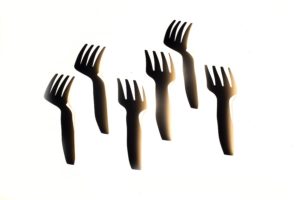
Not just for personal blogs, but very common in the business and marketing world.
On one hand, you don’t want a theme that looks poor and reflects badly on yourself or the company you represent.
On the other hand, you don’t want to be so afraid of having a bad theme that you don’t just pick one and get started. The fear of failure is very real today and seems to be getting worse.
Here are a few tips to help you choose the right blog theme.
1. Determine Priorities
Take a moment to think about why you want a blog…
To write about your feelings and experiences?
To connect with others that share similar interests?
To earn the attention of a target audience of potential customers?
To sell products to people?
There aren’t right or wrong reasons for starting a blog. You can accomplish a lot of things with a blog.
But I learned a lesson in my first job in the real world. I worked for a shoe catalog company. The operation had a lot of moving parts, but the most important element was the merchandise. The best marketing, the best design, the best whatever didn’t matter if the merchandise wasn’t what the customers wanted.
That’s true in most businesses. It’s also true in blogging. The #1 priority for any blog for their to be success is to have content people want to read.
That can be a trap, though, due to fear of failure. You have to commit to writing regularly. On a schedule. You’ll figure out what is good over time. You’ll improve over time.
Keep the focus on the content and a good experience with that content. This usually means a minimal blog theme. One that is fast and that doesn’t distract readers with a bunch of ads, popups, pitches or anything like that.
For design, let the words be the main focus.
2. Cover The Basics
When choosing a theme for your blog just stick with the basics:
- Black or darkish text on a white or whitish background, it’s easier to read
- Mobile-friendly, the majority of people read blogs on their phones
- A place for your logo at the top, not too big, if you’re a business
That’s really it. Don’t overthink the rest of it. Sidebars and footers are fine, but don’t overfill them. Keep the focus on the content. That’s what readers are there for anyway.
You can include calls-to-actions and things like that, but be careful. It’s a slippery slope to try and get readers to signup and click on things. They’re there to find information. They’re not in buying mode.
Use your blog as a way to build awareness for yourself and your brand. That can lead to indirect sales for your business when people search for your brand or when they search for your products and you rank well based on your strong reputation.
3. Adding/Subtracting
When you add something, subtract another to take its place.
We live in a time when it’s easy to add things. And then add more. And then add more.
Most blogs are too full. The sidebars are too full. The popups are everywhere. The footers and headers are full of content.
A great blog theme would actually have just the content in the post. You know, the content that the reader is actually looking for.
Choose a theme with minimal design. Look at the elements. If you want to add something, look for something to remove. If you add a subscription form, look to remove an ad space.
Setting limits is good for most things in life including your blog theme.
Focus On The Writing
Don’t get caught up in the theme or design of your blog. It’s most often an excuse to not begin writing posts or it’s an excuse for a blog not living up to expectations.
Choose a theme that is minimal in design. One that is easy to read when you look at it the first time. Then leave the design of the blog alone and focus on the writing.
